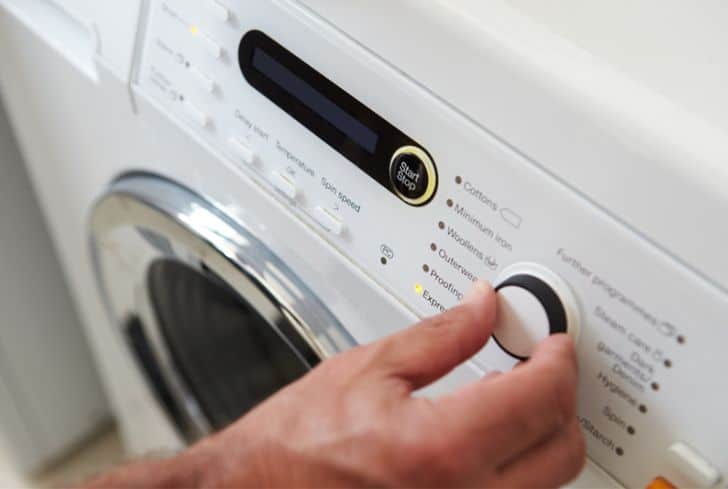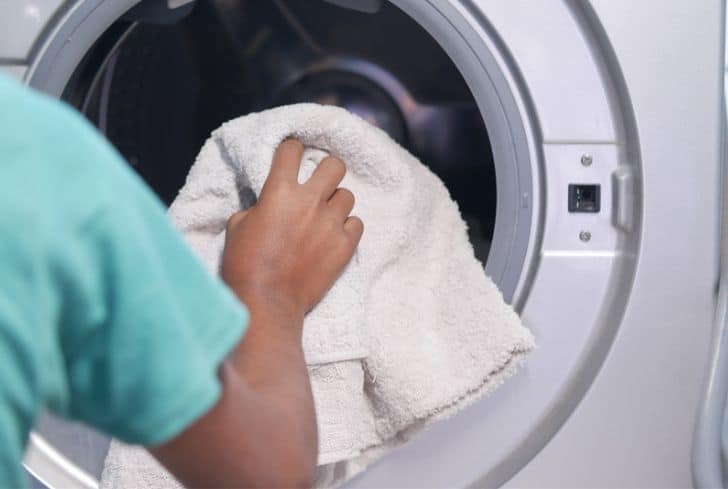How many amps does a dryer use? If you decide to control your energy consumption, you will be asking this question. A clothes dryer is regularly used in the home alongside a washing machine.
These two devices make life easier, but they can also be the reason your electrical bill has been climbing at an alarming rate. Since you will scarcely get a breakdown of how your electricity is consumed, you might as well understand how many amps a dryer uses, which is what this blog post will discuss.
How Many Amps Does a Clothes Dryer Use?
The average clothes dryer uses an average of 7.5 to 30 amps. Compared to other devices in the home, this is a higher consumption because clothes dryers rely on heat energy. Heat is a notorious consumer of electricity, so you can avoid using your dryer frequently when trying to reduce power consumption.
A clothes dryer certainly makes doing the laundry easier. You get instantaneous results and save time, unlike working with a clothesline.
However, this ease doesn’t come at no cost. Aside from the amount you pay for the dryer upon purchase, you will also pay for each watt of electricity the machine consumes. If you haven’t already shopped for your dryer, you can consider the ampere consumption before placing your order.
Thirty amps are on the higher side, but this is the more common amperage you will find on a dryer. A dryer will consume 30 amps when it requires a high voltage, while a low voltage will not consume up to that.
Once again, the size of the dryer and the voltage it uses determines how much electricity it requires. If it is for an enormous household, then a higher volt will be consumed, while a smaller machine will not need as many volts.
How Many Amps does a 110,220,240 Volt Dryer Use?
The higher the voltage required for a device, the higher the number of amps it consumes. The highest voltage the average dryer consumes is 220v to 240v, and those are the ones that require 30 amps. On the other hand, 110v is among the lower grades, typically for smaller devices. It consumes less than 30 amps.
A dryer that uses 110 to 120v is obviously on the smaller side. It is a compact option for smaller households and apartments with low voltage consumption. In that case, this device will consume 7.5 to 15 amps of electricity.
Note that there are high and low voltages, even for the 110v dryer. Lower voltages will likely require 7.5 amps, while higher currents will do well with 15 amps.
Use a dedicated circuit of 15 amps to power your dryer to ensure it gets enough electricity and isn’t in danger of a short circuit. Additionally, of course, this appliance will be friendlier on your electricity bills.
220v requires 20 amps of the dedicated circuit because that is how much electrical current it will consume. 240v will consume between 25 to 30 amps.
Typically, between 220v to 240v, you may also find 230v. Every dryer from this volt consumption range requires between 20 to 30 amps for its dedicated circuit. Avoid pairing these devices with other appliances in the home because they (clothes dryers) are more electricity reliant and would often need their power outlet.
The most common type of dryer you will find on the market is the 240v appliance.
How Many Amps Does a Gas Dryer Use?
A gas dryer uses less electricity than an electric dryer for apparent reasons. It uses four to six amps which is a lot less because it relies on a gas element, propane or natural gas, to dry your clothes.
The need for power conservation is not just for the environment alone but also for your pocket. Many technological options are arising to ensure that you pay less for electricity bills while maximizing performance.
One such innovation is the gas dryer. Propane is a liquid petroleum gas that is safe for household use. It does not smell or release harmful substances into the atmosphere, and its production process is not detrimental to the environment.
Propane is also an affordable gas, which helps you reduce your electricity consumption.
In contrast, an electrical dryer uses metal heating coils. These coils need to amass enough heat energy before drying clothes, and it is no longer a secret that heat is one of the highest consumers of electricity, especially in the home setting.
If energy conservation is the goal, opting for a gas dryer is better. Propane gas is affordable, more so than an electrical heating component.

A gas dryer uses 4 to 6 amps of electricity, but you may encounter options that require up to 10 amps. Since the ampere rating isn’t as high as an electric dryer, a gas dryer can share a dedicated circuit with the washing machine.
However, you will need mental calculations to ensure a surplus instead of a deficit for your dedicated circuit. This means that in cases where you would have reserved a 20-amp dedicated circuit for your washing machine, which also consumes twenty amps, you will need to go higher.
To prevent power starvation, there must be allocations for the dryer and the washing machine. So, your 20-amp washing machine and 4-amp gas dryer will do well when connected to a 30-amp dedicated circuit. It may not be that high, but you must ensure that there is at least additional allocation to prevent short circuits and other electrical problems.
But again, it is best to avoid letting the difference between the ampere rating for the dedicated circuit and appliances be too high because it easily leads to overheating and can cause a fire outbreak.
Can You Use a 40 Amp Breaker for a Dryer?
It is advised that you don’t! Breakers and the appliances you use them with are sensitive and determine the number of things. When choosing a breaker for your dryer, 120v dryers should use 7.5-to-15-amp circuit breakers, while higher volts like 220 to 240 can settle for 10 to 30-amp breakers.
Using a 40 amp breaker is a bit too much because the voltage consumption does not soar that high. Choosing compatible energy or electricity pairs, such as the right breaker amp and the right dryer voltage, is essential.
A dryer consumes significant energy, even though some options don’t. You can choose the amp rating based on your desired energy consumption rate when shopping for a dryer.
If you opt for a 110 to 120v rating, you will get a lower amperage consumption; between 7.5 to 15 amps. Choose a circuit breaker within this range as well; don’t go overboard with the difference because it can trip the breaker or cause overheating, which results in a fire. In other words, you can avoid a fire hazard.
On the other hand, a dryer that consumes up to 30 amps will be on the larger side, more suitable for bigger households. The catch is that it consumes more electricity and needs a higher-grade breaker.
How to Reduce Your Dryer’s Energy Consumption
You can reduce the energy consumption of your dryer by adopting the following tips:
1. Avoid overloading the dryer
Don’t overload the dryer because it will consume more energy. There will be less oxygen and space for the clothes to dry well.
In the same vein, you can reduce your dryer’s energy consumption by drying enough clothes in a single load. The key is to find the balance between too many and too few.
2. Try dryer balls
If the clothes are not too close together, best believe aeration will be easier. That is why you can consider getting dryer balls – they put the necessary space between each article, encouraging faster drying.
3. Keep the dryer clean
This is a no-brainer – a clean dryer will be more efficient. Keep the lint filter clean by washing it with a toothbrush now and then.
4. Regulate the temperature and speed
Regulating the temperature is important because dryers run on heat. They use heat to remove moisture from your clothing, and heating a space requires its fair share of energy.
Therefore, you can save energy by using the lowest heating speed. So, how will your clothes dry?
Set it to the highest drying speed so it will work faster but within a shorter time.
5. Dry clothes strategically
Some clothes are naturally lighter than others. By drying the light ones together, you can save time and energy.
Heavier options like blankets and towels should be done separately and in the same load because they will take more time and energy.
6. Switch to a gas dryer if possible
Using a gas dryer is another way to cut back on energy use in the home. Gas dryers employ propane, an affordable and hazard-free natural gas.
Conclusion
A dryer consumes one of the highest amp ratings in the home, compared with other appliances. Fortunately, it is possible to reduce consumption by tweaking some laundry habits!






